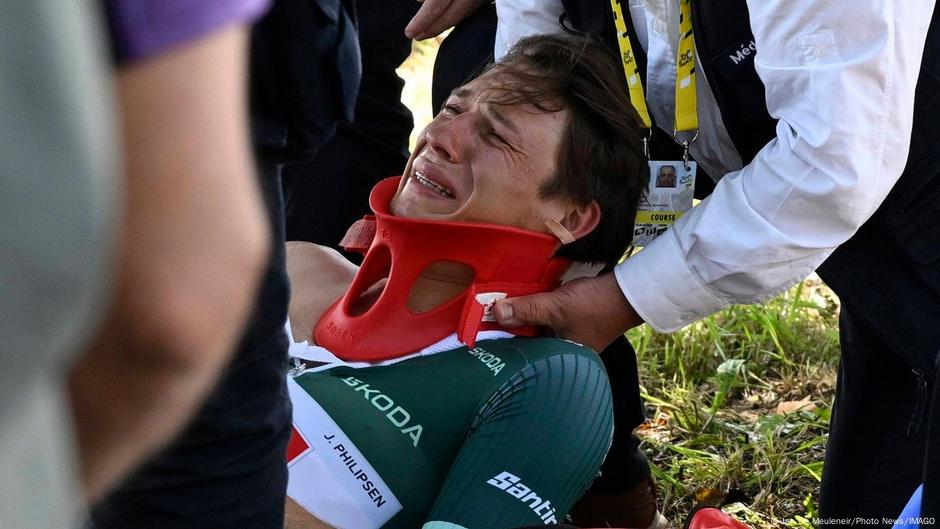Introduction to the Tour de France
The first week of the Tour de France almost never passes without serious crashes. This year’s tour, which started last week and will last until July 27th, was no exception. Belgian Jasper Philipsen was hit on the third stage, resulting in a serious injury.
The Crash
The crash occurred when Frenchman Bryan Coquard was gliding at 37.3 miles per hour during an intermediate sprint. Philipsen, who was attracted to the green jersey worn by the best sprinter, could not avoid Coquard and fell on the asphalt. The Belgian cyclist broke his collarbone and at least one rib, ending his tour.
Consequences of the Crash
The crash also affected other riders, including Swiss rider Stefan Bissegger and Italian Filippo Ganna, who had to leave the race after a crash during the opening stage. The first week of the tour is considered the most dangerous, with everyone trying to make a mark and write cycling history.
Pressure on Sprinters
There are seven flat stages in this year’s Tour de France, and most are in the first week. This increases the pressure on sprinters, who must perform well in the early stages to have a chance at the final phase of the Champs-élysées, which is usually decided in a sprint.
Extreme Willingness to Take Risks
The third stage from Valenciennes to Dunkirk started leisurely, but the crash occurred in the only sprint classification of the day, 60 kilometers before the finish in Dunkirk. Two more crashes followed, with several sprinters ending up on the asphalt. According to German Sprinter Phil Bauhaus, the tour is the largest achievement a professional cyclist can attain, which is why the willingness to take risks is high.
Measures to Control Risk
To control the risk of falling, the UCI, the worldwide corporation of cycling, introduced yellow cards at the beginning of the year, similar to football. Sprinters can be warned if they deviate from the selected line and hinder or endanger another driver, or if they suddenly slow down during a sprint. A second yellow card during a race leads to a seven-day ban, which means disqualification for a tour of several weeks like the Tour de France.
New Features to Improve Safety
Another new feature this year is that the end zone can be expanded from three to five kilometers before the finish line in flat phases in which sprints are expected for the stage victory. When a professional cyclist crashes in this zone, they are counted at the same time as the group where they drove at the time of the crash, meaning they don’t lose time in the overall ranking due to the crash.

